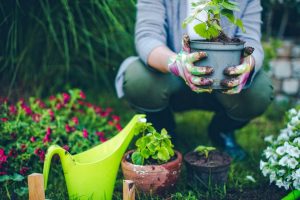
A green thumb is not something you are born with. It takes years of experience, trial and error, and a whole lot of reading and consulting other people to learn how to care for your garden. Some take classes, some read or watch video tutorials, some ask their neighbours and friends. Wherever you look for help, what is important is that you’re looking!
Just like gardening, in education it is important to recognize that we don’t have all of the answers ourselves. It is imperative that we consult the literature, as well as our community of educators, in order to inform our own practice and develop ourselves as teachers.
~ Consult, collaborate, and communicate with others to support student learning ~
As the ancient proverb goes: “It takes a village to raise a child.” Nothing could be more true, especially in the context of education. Both teacher and student require the support of many people in their journey within the educational context to grow. As I reflect on the GDE experience, I am grateful for my critical friend group, my mentors, and activities like the UDL challenge for providing me with perspective that I needed throughout the last couple of years to develop my own practice, ultimately enabling me to be a better teacher to my students.
As Hannell (2015) emphasizes, “Teaching is a demanding job that can be stressful. Support your colleagues with care, concern, and practical assistance when the going gets tough” (p. 15), highlighting the need to look to our peers and colleagues to provide us with support, especially in difficult times. As teachers, we must admit that there is no shortage if difficult times. Our jobs demand our mental, emotional, and physical attention to a degree that can be hard to sustain without the right supports. For me, being part of a critical friend group and part of a mentor/mentee relationship, provided me with two distinct types of indispensable care and perspective. I felt that in our critical friend groups we could be unashamed. Teachers are people and there are times where we need to vent and share our frustrations in a safe space – critical friend groups were essential for that. Because my colleagues were having similar experiences, they could relate, and there is something extra special about sharing in an experience that helps bring about honesty and connection. Distinct, yet of equal value, was the relationship with my mentors. I thank Ann and Graham deeply for sharing their expertise and guiding me through the academic world. They knew their craft so well and were so well read and in the know about what is happening in the educational arena, they were able to help me when I felt derailed during my inquiries. I truly believe that the opportunity to share learning with others is utterly invaluable.
Imperative in the process of supporting students, is their parents. Developing my relationship with parents and challenging myself to find ways to connect with them more directly and more often, has been one of the best ways to support their children. Most often, we talk to parents at very specific times in the year: parent/teacher meetings, report card periods, and when something has gone wrong. What I have learned is that that is not a relationship. A relationship takes more work than that and requires much more engagement. So much of what happens in school is solidified at home. By engaging parents in what is happening in the classroom, we are expanding our reach into their home life. What’s more is that parents actually feel more supported themselves, highlighting the reciprocity in parent/teacher relationships. Articles that have impacted me recount both the difficulties (Doody et al., 2013) and the triumphs (Lodewyks, 2018) of parents’ experiences in raising a child with a disability. Although these are accounts of very distinct experiences, they are not dissimilar, as they both raise the point that there is a lot to be learned as a parent, and a lot for teachers to learn about the parenting experience.
Sharing experiences is another way to create connection. During the GDE program we were given a “UDL challenge,” where we were tasked with turning one of our lessons into a UDL lesson. I worked in a pair and together we revamped an old math lesson I had taught earlier in the year. What was refreshing about this experience was a) how quickly we were able to get the task done; b) how insightful it was to work with someone who taught math as their major subject; and c) how it broadened my perspective about what UDL really is. My understanding that UDL was simply about giving more choice, was short-sighted. UDL is about choice, but it is so much more than that. UDL is the art of diversifying and removing barriers throughout the entire learning process (CAST, 2020). Broken down into the general sections of engagement (the why), representation (the what), and action and expression (the how), students are provided with a range of strategies and supports from the moment of inciting interest until the moment of manifesting their learning. What I liked is how the checklists and frameworks provided by CAST actually pull from what would usually be considered the role of the classroom teacher and the resource teacher separately, promoting the utility of co-teaching, and ultimately connection and collaboration!
